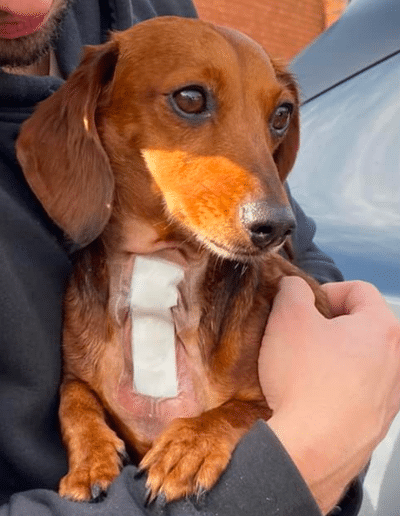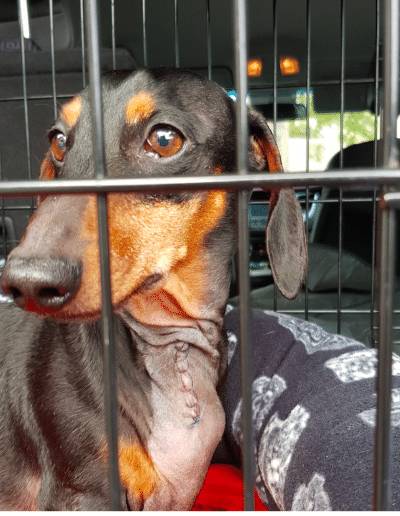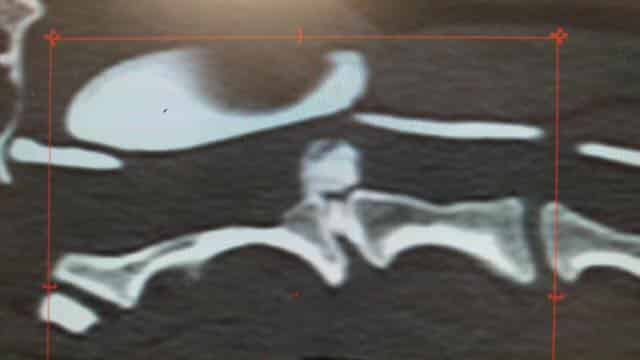Cervical (neck) disc disease
The two most common locations of IVDD are thoracolumbar (mid-spine) and cervical (neck). Dogs with spinal IVDD usually have neurological dysfunction (weakness, inability to walk, etc.) and pain. Dogs with cervical IVDD often have severe pain alone and it can be trickier to pinpoint as the signs and symptoms are different to thoracolumbar.
The signs and symptoms
Neck spasms, episodes of spontaneous crying including wobbling on all four legs (ataxia), forelimb lameness, holding the neck low, and being unable to lift the head fully are symptomatic of a cervical episode.
Management
Low-grade cases of cervical IVDD can be managed conservatively with rest and pain relief however when neck pain is severe, fails to respond to medical options or produces significant neurological problems in the legs, surgery is indicated. This is performed via the front neck region and the good news is recovery is usually quicker here than for disc disease at the thoracolumbar site,
The best way to confirm a diagnosis if you suspect Cervical IVDD is to head straight to a Veterinary Specialist who will perform a CT/MRI.





